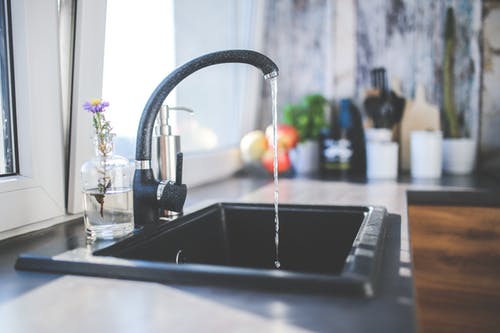Steel pipe is durable, fire resistant, and rot resistant. This is the reason steel pipe of all diameters is favored for commercial building projects. Diameters can run from 4 ½ inches all the way up to 30 inches. Steel pipes do especially well under the soil line. Steel pipes used in bollards and barriers protect building fronts and gas pumps. Steel pipes of many sizes and kinds are used for water pipes, culverts, sign bases, and for piers.
Steel Pipes Uses
Steel pipes are used for many construction projects such as bridges, flag poles, building foundations, boat docks, gate entrances, and fences. Steel pipes are used in oil drilling and to carry water. Steel piping can be used for billboards and signs on freeways and in front of commercial buildings. All types of steel pipes are durable and versatile in many industries.
Steel Tubing
Steel tubing is similar to piping and is used for cattle pens, horse pens, pole barns, and carports. Steel tubing can be used for fencing and gates. Steel tubing is a reliable building material because it is structurally sound, easy to weld, and long-lasting. It is impervious to weather. Both steel piping and tubing can be custom cut or purchased in many standard lengths and diameters.
Water Supply Systems Use 9 Types of Pipes
There are 9 different types of pipes that have been used in water supply systems. Each has positive and negative qualities.
- Cast-iron pipe. This type of pipe is used for multiple city water distribution systems because it has a high resistance to corrosion. Cast-iron pipe is made from pig iron and under the right conditions it can last up to 100 years. Cast-iron pipes can be made in several thicknesses and come in 12-foot to 20-foot lengths. They are usually dipped in a bituminous compound to protect against corrosion.
- G.I. pipe. Galvanized iron pipe or G.I. pipe is made of mild steel sheet and has a lengthwise joint that is welded. These pipes are used to supply gas, water, or other liquids inside buildings. After making these pipes they are dipped in a zinc solution or galvanized to resist rusting. These pipes are inexpensive and easy to bend and weld. They are lightweight and easy to cut and thread. The negative characteristic is that they are badly affected by alkaline and acidic waters. They last 10 years or more.
- Wrought-iron pipe. Wrought-iron pipes are similar to G.I. pipes and are also used to carry water, gas, or other liquids. The difference is that wrought-iron pipes are made by welding wrought-iron sheet. There are also seamless pipes made. These are also lightweight, easy to cut and bend, and thread.
- Steel pipe. Steel pipes are also used to carry water, gas, and other liquids from place to place. They are also used for many other uses such as construction, oil drilling, fencing, and more. They can be bent easily, and they can be joined by a flanged joint. After these pipes are made, they are dipped in zinc to galvanize them. These pipes last from 25 years to 50 years.
- Copper pipe. Copper pipes are made in small diameter sizes and are durable because they do not rust. But copper is more costly than many materials, so it is used in limited places such as carrying steam or hot water.
- Plastic pipe. Plastic pipes include rubber or P.V.C. pipes. They are used to supply water—even acidic or alkaline water. Hot water shouldn’t be carried out. These pipes are joined using a thread joint with a chemical solution. They have excellent resistance against electrical current but have limitations with hot temperatures.
- Asbestos cement pipe. Asbestos pipe is manufactured from asbestos, silica, and cement under pressure to form a dense, strong material. This is a strong material that is easy to work with, but it’s rubber joint seals may deteriorate if exposed to gasoline or other petroleum products. The pipes can be damaged by excavating tools and do not bend well. They can be used to carry water under a low pressure.
- Concrete pipe. Concrete pipe is cast and comes in sizes up to 82 inches in diameter. Some pipes can be made as large as 180 inches in diameter. They are reinforced with spirally wound wire or something called elliptical boom. This type of pipe should last 35 to 50 years under normal conditions. Concrete pipes are durable and don’t rust, but they are heavy and difficult to transport. They are not easy to repair either.
- Vitrified clay pipe. Vitrified clay pipe is not used for pressure pipe. It is commonly used for sewage and drainage lines where it has a long life. Its smooth surface results in hydraulic efficiency. It is difficult to achieve watertight joints.
All Pipe Materials Must Meet Standards
All types of pipes have advantages and disadvantages to consider. Manufacturers don’t always make the same quality products. So, the industry has testing and standards to ensure high-quality and uniformity. Standards for materials used in plumbing systems ensure a uniform product availability from manufacturers that seek third party certification.
The durability and performance of a plumbing system depend on the quality of the materials used and the skills of the plumbers who install it. The best-designed system will not operate safely and hygienically if substandard materials are used or it is incorrectly installed. Plumbing systems must meet local building codes.
A good plumbing or water supply system relies on the correct materials being selected for each application. Then, the system must be properly designed by a qualified professional. A bad design can result in water delivery systems that do not perform well. Then, that design and those certified materials must be installed correctly by a licensed plumbing professional. When all the steps are followed, the plumbing or water delivery system can last for many decades while serving a single building or a whole community.

